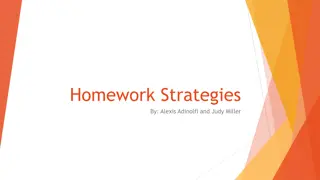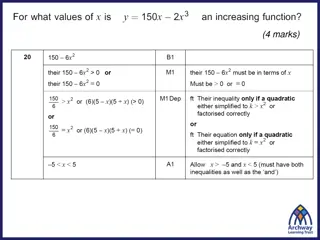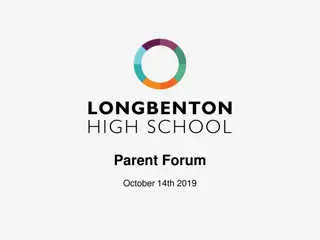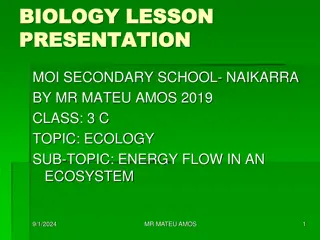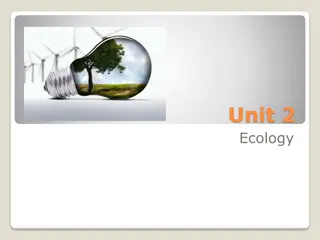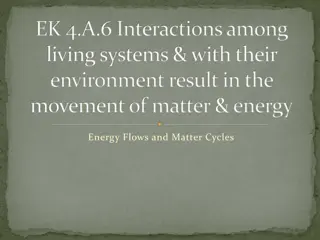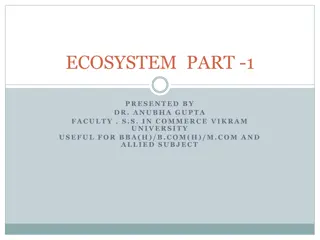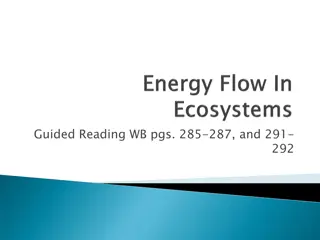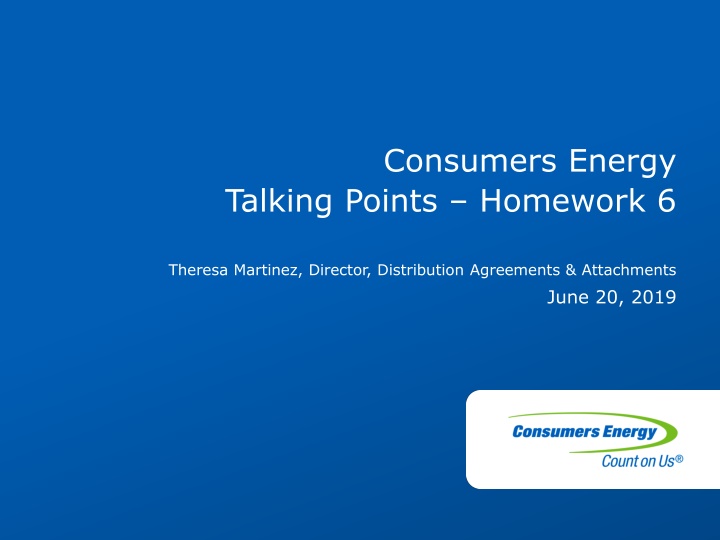
Consumers Energy Talking Points Homework
Theresa Martinez, Director of Distribution Agreements & Attachments, discusses key points, pre-application reports, study scope, and costs related to material modification and DER output. The document also includes a disclaimer from Consumers Energy regarding their review of the MN DIP. Additionally, examples of responses from pre-application reports are provided, detailing system characteristics, required modifications, and feasibility assessments for interconnections.
Download Presentation

Please find below an Image/Link to download the presentation.
The content on the website is provided AS IS for your information and personal use only. It may not be sold, licensed, or shared on other websites without obtaining consent from the author. If you encounter any issues during the download, it is possible that the publisher has removed the file from their server.
You are allowed to download the files provided on this website for personal or commercial use, subject to the condition that they are used lawfully. All files are the property of their respective owners.
The content on the website is provided AS IS for your information and personal use only. It may not be sold, licensed, or shared on other websites without obtaining consent from the author.
E N D
Presentation Transcript
Consumers Energy Talking Points Homework 6 Theresa Martinez, Director, Distribution Agreements & Attachments June 20, 2019
Key Points Pre-Application Report Study Scope and Costs Material Modification Defined DER Output 1
Disclaimer Consumers Energy s review of the MN DIP does not mean: We have necessarily reviewed other referenced documents, or that we do or do not agree with those referenced documents. Our comments on the assigned sections do not necessarily address those cross-references, which we will address at a later time. The fact that we comment or do not comment on particular provisions does not mean we will not have further input on those sections at a later time. We have used best efforts to incorporate as much feedback as possible, but it is difficult to do as only partial/ individual sections of the MN DIP are reviewed. 2
Pre-Application Report Information concerning the utility system operating characteristics and location of system components. Per MPSC Rule 20(1) 2-hour technical consultation upon request No cost to the Applicant o o Information needed from the Applicant Location (coordinates or address of project) Total project capacity (MW) Type of generation Information provided by Consumers Energy Information concerning the utility system operating characteristics and location of system components pertinent to the Applicant-submitted location and project capacity 3
Pre-Application Report Responses Examples of responses: Does not appear to be in Consumers Energy Electric territory Primary system voltage is 14.4/24.9 grounded wye from Substation A Approximately 2.2 miles from the substation Three-phase primary in the area Will require some primary system modifications Note: impacts to the system could vary greatly. These impacts will have to be studied to determine the feasibility of this interconnection to the LVD system. A new dedicated 46 kV line (approximately 2.2 miles or longer) and 46 kV substation upgrades would be required to connect X MW of generation at this location at a significant interconnection cost. An application and study would be required to determine feasibility of the interconnection. There is a 46 kV line adjacent to the coordinates given. Direct connection of X MW would be marginally feasible and would require application and study to confirm. Alternatively , a new dedicated 46 kV line, potentially Y miles or longer and 46 kV substation upgrades would be required to connect X MW of generation at this location at a significant interconnection cost, but would also require an application and study to confirm feasibility. 4
Study Scope System Impact and Facilities Study The purpose of the studies Within the Rules The details on what to study to achieve that purpose Utility discretion System Impact Study Similar to the MPSC Engineering Review Initial feasibility study, identification of distribution system upgrades, interconnection facilities and cost estimates Facilities Study Similar to the MPSC Distribution System Study In-depth confirmation of the feasibility study, distribution system upgrades, interconnection facilities and cost estimates o o 5
Study - Consumer Energy Reports Example study outline: Circuit Analysis Steady State Voltage Analysis Power Flow Reactive Power Considerations Short Circuit Duty Unbalanced System Conditions Technical Requirements Isolating Transformer Isolation Device Interconnecting Lines Substation 46kV High Voltage Distribution System Interconnection Protection Relaying Direct Transfer Trip Automatic Reclosing and Single-Phase Conditions Prevention of Islanding Telemetry and Disturbance Monitoring Parallel Operation Communication Circuits Metering Connection Costs 6
Costs Consumers Energy Recommendation: Pre-application Report, Processing, Screens and Study Costs o Review at intervals to determine non-refundable cost based on average actual completion costs o Pre-application report, processing and screens costs determination Methodology approved by MPSC Calculated costs updated and posted in Requirements or on public site o Review Costs Methodology approved by MPSC Calculated costs included in the review agreements Distribution system upgrades o Applicant responsible for estimated costs prior to construction o Estimates calculated based on best practices o May include contingency o Reconciliation with actual costs post construction o If actual costs are greater than estimated costs Attacher pays Utility the remainder; if actual costs are less than estimated costs Utility pays Attacher the remainder 7
Material Modification Material Modification: Existing connected generation o Generator owner must apply through the interconnection process prior to making a material modification Applications in-process o Any material modification will cause the application to be resubmitted and include the modification o Applicant must submit an updated application packet detailing the change along with payment so it can be reviewed by the Utility. If the change is deemed to be material a new reference number will be created and the application will be processed as new. If the change is deemed not to be material, the project will resume in its present stage. o o 8
Material Modification Defined Non-exhaustive list of material modification by Applicant: Any change in total project size (increase or decrease) Change in major equipment* Change in interconnection point* Change in protective equipment Change in high-voltage collector system lengths/impedances Change in the number or size of inverters *Any changes in major equipment or interconnection point will result in the project being reviewed for Material Change on a case-by-case basis. 9
DER Output There is a need for well defined standards IEEE or U.L. Utility would need to monitor the output One suggestion Utility control 10




